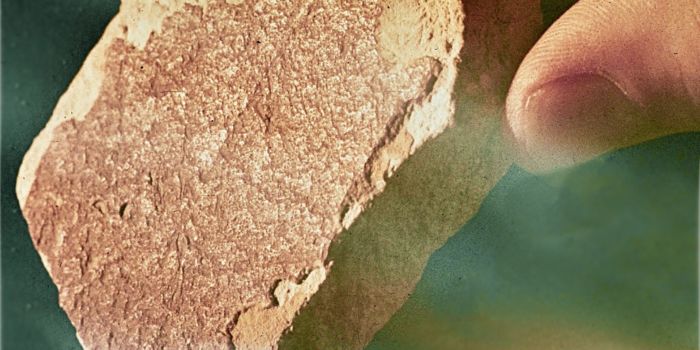Are Pyramids Made Out of Concrete?
Pyramids (1) Are Pyramids Made Out of Concrete?
Pyramids (2) The evidences
Pyramids (3) The formula, the invention of stone
Pyramids (4) Videos and book
Pyramids (5) FAQ for artificial stone supporters
Pyramids (6) Deep misleading publications by geologists
Hundreds of thousands of people have read articles and seen videos on the internet dealing with the pyramids of Egypt having been constructed from geopolymer concrete. The arguments of the opponents are always based on the same papers written by American geologists, published 15 to 30 years ago. These publications are draped in scientific impartiality when this is not the case. Here we point out their fatal flaws. Unfortunately, critics relying on said papers persist by pointing out the following three geological studies as the ones that restore the truth. It is time to put an end to this pseudo-science.
- Dipayan Jana never actually examined the “Lauer Sample”
- Another major misleading paper by James Harrell and Bret Penrod
- The fatal flaw failure of geologist Robert Folk and petrographer Donald Campbell
1- Dipayan Jana never actually examined the “Lauer Sample”
Petrologist Dipayan Jana, of CMC-Materials Inc., in the USA, presented a paper at the 29th ICMA Conference in Quebec, Canada, titled “The Great Pyramid Debate” and later published his information in the Proceedings of the 29th Conference of Cement Microscopy, Quebec, Canada, May 20-24 (2007), pp. 207-266. He critiques my scientific findings as well as those of my colleagues, Materials Scientist M. W. Barsoum et al., Microstructural Evidence of the Reconstituted Limestone Blocs in the Great Pyramids of Egypt, Journal of the American Ceramic Society, 89 (12), 3788-3796 (2006)]. Here I will show the fatal flaw in D. Jana’s said work. We start by considering the target sample.
A. What is the Lauer sample?
The controversy concerns the analysis performed on a sample of the Great Pyramid of Cheops entrusted to me by the eminent French Egyptologist Jean-Philippe Lauer in 1981, and on which I have made analyses, publications and conferences. It is defined in the literature under the name of the “Lauer sample”. It is a piece of interior casing of the pyramid, made of limestone material, covered with a white man-made coating of calcium phosphate (hydroxyapatite) 1 mm thick and a red-brown iron oxide paint. See photo of the original Lauer sample from 1982 in Figure 1.
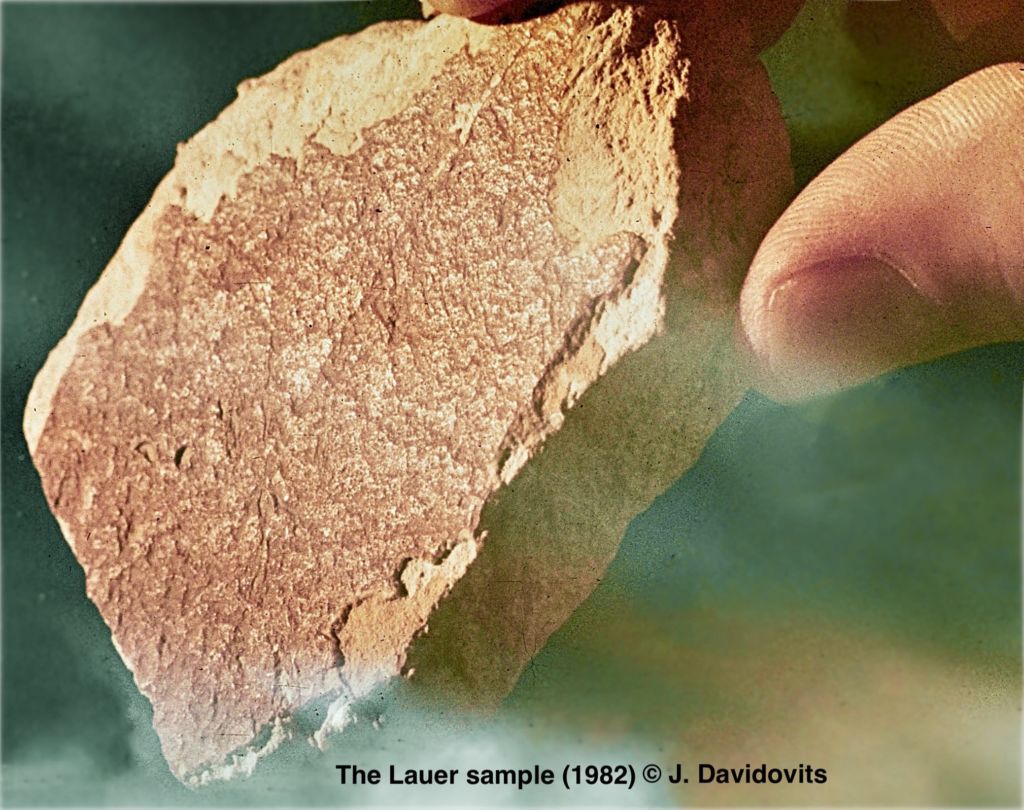 Figure 1: The Lauer sample. Photo taken in 1982.
Figure 1: The Lauer sample. Photo taken in 1982.
Parameters for authenticating the true Lauer sample include its 4500-thousand year-old white coating and red-brown paint, and its dimensions.
B. Why did D. Jana test a fake sample instead of the Lauer sample?
D. Jana receive a piece of the “Lauer sample” from the American geologist specializing in the quarries of ancient Egypt, James Harrell, now Emeritus Professor at the University of Toledo. J. Harrell is a geologist opposed to the theory of agglomerated stone; we sent him the Lauer sample and his conclusions are obviously the opposite of those of our team of scientists. He returns what he claims is left of it, a severely damaged sample. However, years later he provides a sample of what is supposedly remnants of the Lauer sample to D. Jana. Thus, Jana calls the Lauer sample the “Lauer-Harrell” sample in his study (Figure 2) published in the Proceedings (see above).
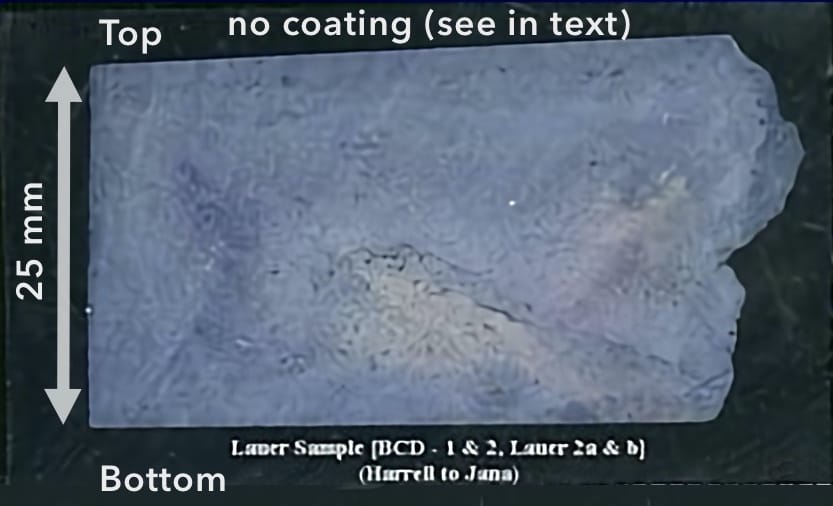 Figure 2: The “Lauer-Harrel” blue sample received by D. Jana.
Figure 2: The “Lauer-Harrel” blue sample received by D. Jana.
Page 213: “The Lauer-Harrell was a solid 25 × 45 mm sized, blue epoxy impregnated saw-cut section of a piece, larger than the Lauer-Campbell sample…”
The whole context of the study, described in Figures 12, 13, 14 on pages 252, 253, 254 of the Proceedings, shows that it is a vertical section (in thickness) and that it is not obliquely cut. The dimensions are: 45 mm wide and 25 mm thick.
However, the original thickness of the Lauer sample is 15 mm (see in Figure 3). In contrast, the “Lauer-Harrell” sample supplied by Harrell to Jana is 25 mm thick.
By deduction, the thickness of Jana’s sample proves that it could not have been the authentic Lauer Sample.
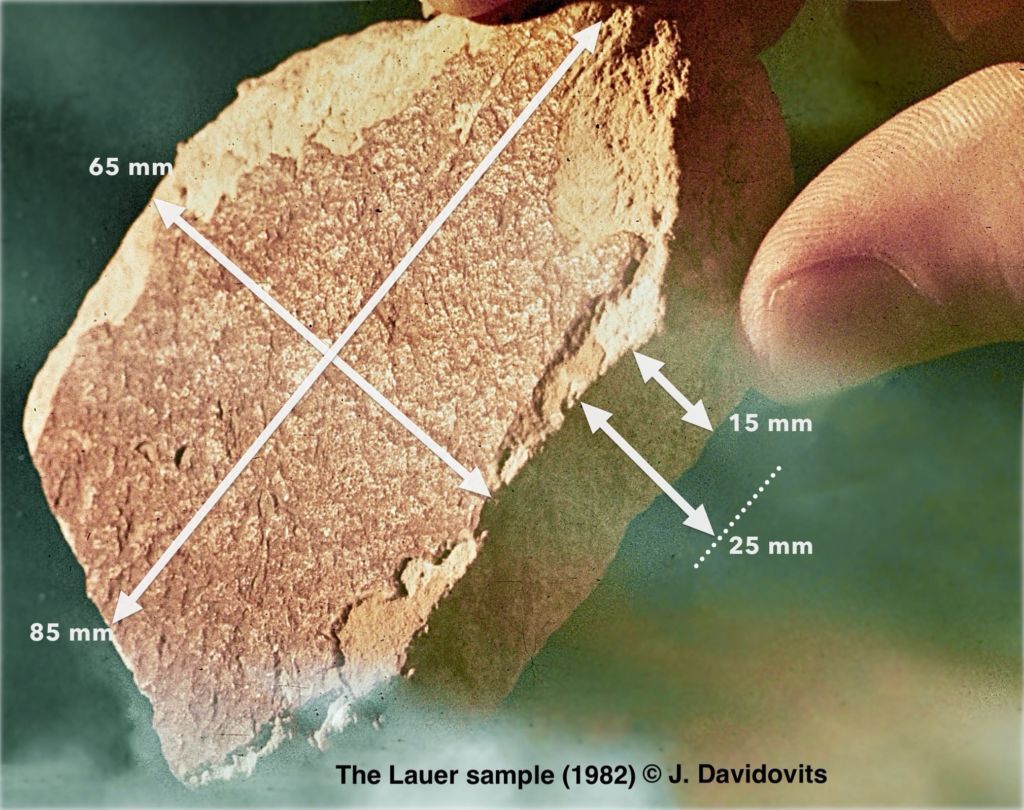 Figure 3: The thickness of the genuine Lauer sample compared with the sample studied by D. Jana.
Figure 3: The thickness of the genuine Lauer sample compared with the sample studied by D. Jana.
C. In D. Jana’s study, there is no coating. So, is this a FAKE?
Jana observes that the sample he has received from Harrell does not exhibit the distinctive coating of the Lauer sample. The coating is a critically important distinguishing trait that characterizes the authentic “Lauer sample”. In the Proceedings, Jana mentions three times (pages 213, 229 and 255) on the non-compliance of the sample with the scientific literature. Despite the doubt, and despite the sample mysteriously and impossibly growing 10 mm in thickness, he continues his studies claiming that the Lauer sample is natural limestone.
So:
- Page 213: “Neither piece contained the white coating or the red paint that was originally mentioned by Davidovits, which was reportedly (by Harrell) accidentally removed during the preparation of the thin section”.
- Page 229: “Although the actual “coating” was not present in the Lauer sample of this study (reportedly accidentally removed…)”.
- Page 255: legend of Figure 15: “Despite the absence of this coating…”.
J. Harrel published a study in 1993 on this white coating (see in Figure 15, page 255, in the Proceedings), but in 2007 he sent D. Jana a different piece of limestone not covered with this characteristic coating, calling it nonetheless the “Lauer sample”.
It is hard to imagine a competent, skilled geologist accidentally removing the coating from the Lauer sample when preparing a thin section of it. The coating is very firmly welded to the stone and does not flake off. It is not a paint, and the impregnation of blue epoxy is used to prevent such accidents. J. Harrell has made too many thin sections in his professional life to destroy a major archaeological sample. If it does not have its characteristic coating, its origin is doubtful.
CONCLUSION:
The most logical explanation is that the sample D. Jana studied was a piece of natural limestone from Egypt’s Tura quarry 25 mm thick (instead of 15 mm) without the white artificial coating of calcium phosphate.
It is therefore a forgery. Jana’s study of the rock passed off as the “Lauer Sample” can no longer serve as a reference. Jana is, therefore, obligated to retract his paper in good conscience, and Harrell must explain or accept responsibility for his actions.
2- Another major misleading paper by James Harrell and Bret Penrod
A chapter of my book “Why the Pharaohs built the Pyramids with Fake Stones” shows another serious misleading conduct published by Harrell and Penrod. See in Appendix B, page 265 (2017 edition) or 263 (2009 edition). In chapter 7, I describe the Mokattam Formation at Giza comprised of layers of middle Eocene limestones upon which the Great Pyramids of Giza are built. The Mokattam Formation comprises two distinctly different layers of fossil shells limestone: a hard gray upper bed on which the pyramids are built, and a friable marly yellowish bed. It was this friable, earthy deposit (concrete grade) limestone that was exploited to build the bulk of the Great Pyramids of Giza (see the diagram in Figure 4).
 Figure 4: cross section of the Giza plateau, the Mokattam Formation and the quarries.
Figure 4: cross section of the Giza plateau, the Mokattam Formation and the quarries.
Despite this basic well-published geological knowledge, and clearly visible on the two outcrops located near the monuments, the American geologists J. Harrell and B. Penrod dispute the theorem of the artificial manufacture of limestone blocks, as follows.
In their article [Harrell, JA and Penrod, BE, The Great Pyramid debate; evidence from the Lauer sample, Journal of Geological Education, vol. 41, No. 4, pp. 358-363, 1993], they state: “… Our objection to the geopolymeric process (agglomerated stone process) has to do with disaggregating limestone by soaking it in water — it does not work! We soaked the Mokattam limestones whose composition is given in Table 1 for seven weeks and after this time the samples were just as hard and solid as the day we first immersed them…”
For their demonstration, Harrell and Penrod instead removed hard limestone from Gebel Mokattam, 20 km from the pyramids, on the other side of the Nile (see Table 1 cited in their said publication). That is, they should have sampled from the concrete-grade limestone quarries located in Giza, in the wadis or in the Sphinx trench at the foot of the pyramids. It is well known to all experts on Egyptian geology, and well-published in Egyptological literature, that these two Giza sites (the wadi and the trench in which the Sphinx sits), are where rock materials for the Great Pyramids of Giza are derived. The sample they soaked in water does not come from the Giza pyramid site at all. It is taken from a non-applicable location, the modern quarry of hard limestone behind the Citadel of Gebel Mokattam in Cairo, 20 km east of the Giza pyramids, on the other side of the Nile.
How can professionals consider that the Mokkatam geological formation of Giza is absolutely identical to the geographical designation Gebel Mokattam? Why not have just taken a piece of stone in Giza, on the site of the pyramids? Why make it so complicated? J. Harrell hopes to fool the public, collecting a rock sample of different origin, but bearing the same name, to demonstrate that our theory is false.
C- The fatal flaw of geologist Robert Folk and petrographer Donald Campbell
This is not the first time that geologists have published studies containing serious failures. Thus, immediately after arriving on the Giza plateau in January 1990, the American geologist R. Folk and petrologist D. Campbell observe blocks of stone which seem to them to be natural limestone. They publish an article in Journal of Geological Education [R.L. Folk and D.H. Campbell, Are the Pyramids built of poured concrete blocks, Journal of Geological Education, Vol.40, pp. 25-34 (1992)].
In my book “Why the Pharaohs built the Pyramids with fake stone”, page 268, I reproduce the original text: “Within the first minute at Cheops pyramid, we knew that the pyramids were built of real limestone blocks, not of concrete (reagglomerated stone)….”
We also read:
“… we feel it is the duty of professional geologist to expose this egregiously absurd archeological theory before it becomes part of entrenched pseudo-science… We believe that had Davidovits had any understanding of basic geologic principles and understood the implications of simple geological evidence at Giza, he would have realized that this geopolymer theory had no basis in fact...”
Upon arriving at Giza, Folk and Campbell go directly to the northeast corner of the Great Pyramid of Cheops. In their article, they do not explain the reason for this choice. There, they find natural limestone (see photo in Figure 5). In 1983, the American Egyptologist Mark Lehner mentions the existence of this natural geological layer, going up to 4 meters above the base of the pyramid, in this northeast corner. But R. Folk and D. Campbell ignore this essential information. I publish my answer in a renowned journal “J. Davidovits, The Great Pyramid debate, Concrete International, Vol. 14, No. 2, pp. 17-18, (1992) ”.
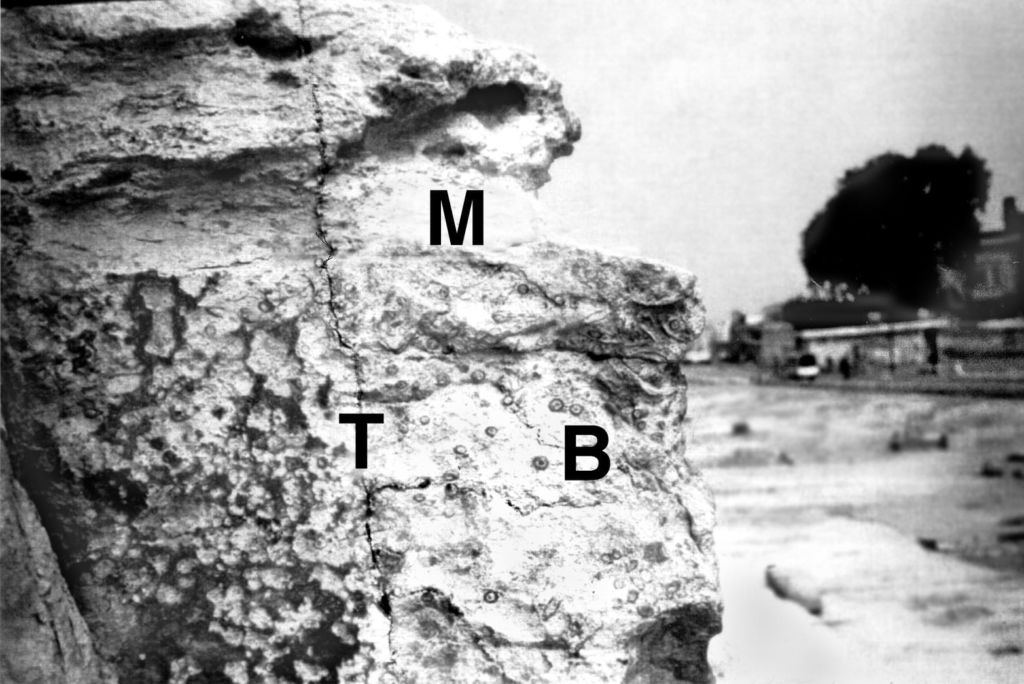 Figure 5: the natural limestone at the northeast corner of Cheops Great Pyramid.
Figure 5: the natural limestone at the northeast corner of Cheops Great Pyramid.
Soon after, I receive a letter from R. Folk dated February 18, 1992, which reads:
“…I was impressed by your reasonable and interesting letter in Concrete International, Feb. 1992… Your argument that the lower two courses of Khufu (Cheops), on the east face, are in place bedrock is intriguing and I must admit was a new thought to me. This morning, thanks to your citation, I went over and read Lehner (1983) on Khufu (Cheops) and he does indeed show the NE corner of Khufu to be bedrock in his sketch. Our photo was of that corner. So I concede that, on the North-East corner, you are correct as the bedrock idea had not entered my head at the time we were there…”
Robert L. Folk, renowned for writing the standard limestone geologists refer to, admitted that he has no basic knowledge of the geology of the Giza plateau when he makes his survey and triumphantly proclaims: “… Within the first minute at Cheops pyramid, we knew that the pyramids were built of real limestone blocks, not of concrete (reagglomerated stone)…”
Ironically, the geologists do not differentiate between a natural outcrop of the plateau and blocks of pyramids!!! How to take this study seriously when all tourists can readily see this distinction?
The article by Folk and Campbell, published 30 years ago, is still cited today by those whose purpose it is to discredit my research. They do not know that Folk confessed his error.
References (books):
In French:
2017, J. Davidovits, Bâtir les Pyramides sans pierres ni esclaves, édition Jean-Cyrille Godefroy, Paris, ISBN 9782865532889.
In English:
2009-2017 (2è edition), Joseph Davidovits, Why the Pharaohs built the Pyramids with fake stones (in soft cover and eBook), ed. Geopolymer Institute (Institut Géopolymère), Saint-Quentin, France, ISBN: 9782951482043, available at geopolymer.org/shop or amazon.com and others on line.
2010, Margaret Morris, The Great Pyramid Secret: Egypt’s Amazing Lost Mystery Science Returns, Scribal Arts, Detroit, USA, ISBN: 978-0972043465, available at amazon.com

